Making clock mainspring barrelsby David Creed, UK
Download a pdf of this article
For the past few months I have been making my own clock barrels. This came about as a result of been frustrated with the limited stocks available at the suppliers. The process is not as hard as people may think and was probably normal practice in year’s gone by.
I recently had a fusee clock in for repair that had been in a local clock repair shop. They had charged for a full overhaul but on inspection there was a long list of faults and the movement was still dirty. After attending to various bearing problems and making good the dead beat pallets, two bearings were machined for the fusee arbor and fitted.
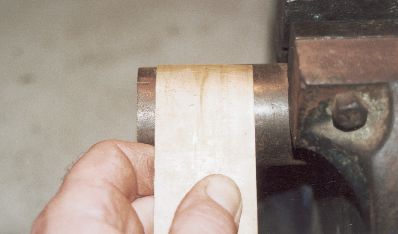
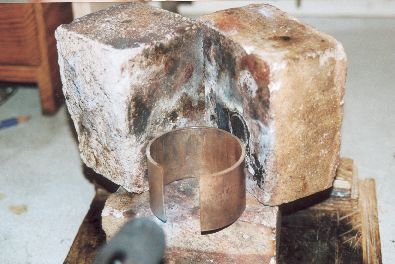
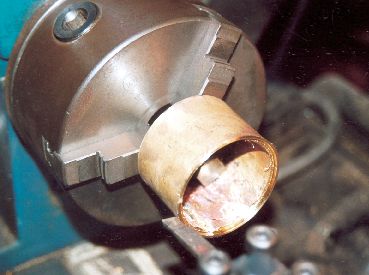
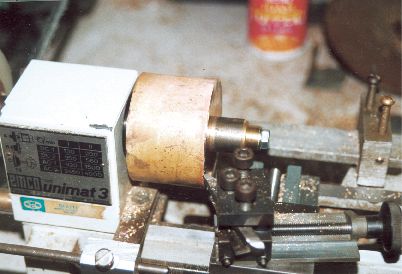
The most serious fault was the spring barrel; this had originally been stamped out from a brass blank and was in a dangerous condition due to about ten stress fractures. I tried to braze as many as I could but I felt that this course of action wasn’t going to be a long-term or safe repair so after informing the customer I was given the go ahead to make a new barrel.
The first requirement is to determine the diameter of the barrel and multiply by ?, which will give you the length of brass plate needed. Cut the 1/8in thick brass plate to length and add 1/8in to the width for trimming later. Make sure that the ends are at 90 degrees or you will have trouble later when joining up.
Select the surface of the brass plate which will be the outside of the barrel and mark it for future reference. On each end of the plate, file a shallow chamfer that will be the internal edge, this will help when joining up. Heat the plate to red and quench in water to soften the brass. The next thing is to install in the vice a steel bar that is about 1/4in diameter less than the internal diameter of the tube to be made, this is the former for hammering over the tube.
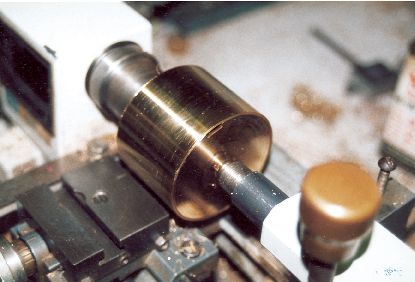
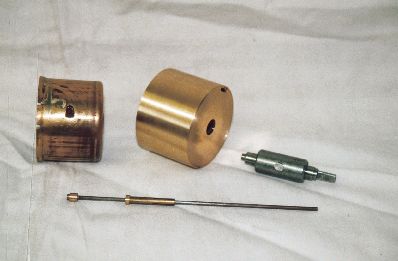
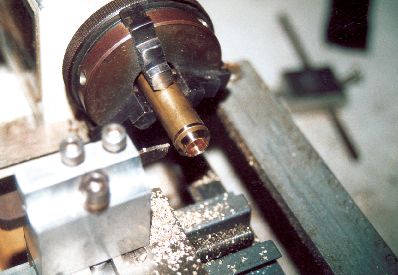

I have a large vice but because the jaws are ground smooth for holding clock parts without bruising they are no good for this sort of work, so I use the space underneath the jaws to hold the steel bar. Offer up the plate and make sure that the chamfered edge is facing down. Place the plate on the former at 90 degrees and extend about 1/2in, take a hide or nylon mallet and proceed to shape the plate. Advance the plate again and repeat until half way, turn the plate around and start at the other end and work into the middle.
The brass will have work hardened so heat again and repeat until the ends come together. When holding the tube horizontal with the right-hand edge 1/16in of to the right, slip the tube over the steel bar and rotate away from you, and hammer the right hand edge working back to the join. Flip the barrel over and repeat hammering the right hand edge only.
When you are satisfied with the join twist a piece of 1/16in wire around the tube with pliers to pull the joint together and braze or silver solder the join. Clean the flux from the barrel and file off the small piece of steel wire that will have stuck to the barrel surface. Measure the diameter and if it is a little oval or egg shaped measure the high spots and tap with a hammer to as near round as possible. Proceed as normal practice for making barrels. For those people who like to make as much of the clock as possible then this is one step nearer to your goal.
Download a pdf of this article
|
|

